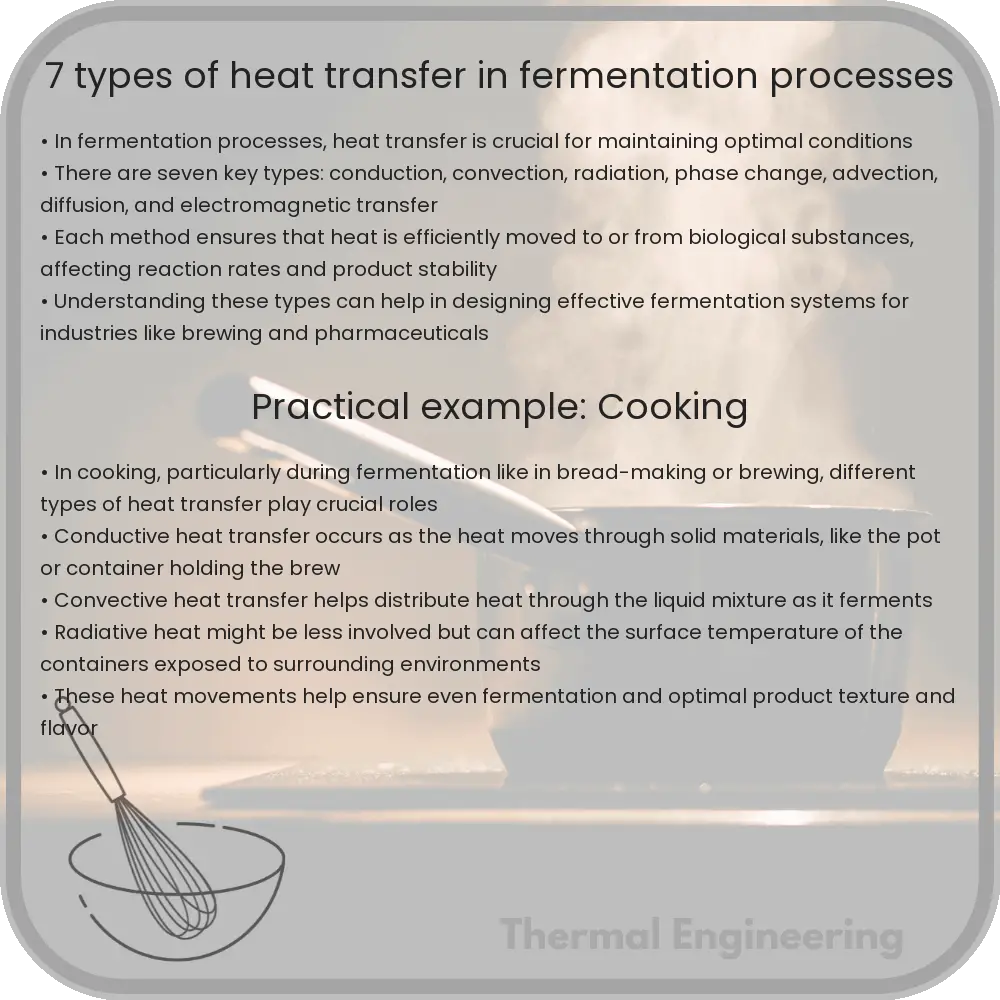Learn about the seven types of heat transfer mechanisms crucial for optimizing fermentation processes in various industries.

7 Types of Heat Transfer in Fermentation Processes
Heat transfer plays a critical role in fermentation processes, which are widely used in industries such as brewing, pharmaceuticals, and food production. Understanding how heat transfer can affect fermentation is essential for optimizing these processes. Here are seven types of heat transfer mechanisms that can occur during fermentation:
1. Conduction
Conduction is the transfer of heat through a solid material or between objects in direct contact. In fermentation tanks, heat conduction occurs through the walls of the container. If the tank is made from a material with high thermal conductivity, such as stainless steel, heat is efficiently transferred, helping to maintain the desired temperature within the tank.
2. Convection
Convection occurs when heat is carried away by a moving fluid, which can be a liquid or a gas. During fermentation, natural convection occurs as warmer, less dense liquid rises and cooler, denser liquid descends. Additionally, forced convection can be used by stirring or agitating the fermenting mixture to maintain an even temperature distribution.
3. Radiation
Radiation refers to the transfer of heat in the form of electromagnetic waves. In fermentation processes, heat can be lost through radiation from the surface of the fermentation tank into the surrounding environment.
4. Evaporation Cooling
Evaporation cooling occurs when liquid turns into vapor, taking away heat from the remaining liquid. This principle is commonly utilized in fermentation to control excess heat, especially in aerobic fermentation where heat production can be significant.
5. Heat of Respiration
During fermentative metabolism, microorganisms produce heat. This metabolic heat, also known as heat of respiration, can significantly raise the temperature of the fermentation medium. Managing this heat is crucial to prevent overheating, which can inhibit microbial activity or kill the microorganisms.
6. Indirect Heat Exchange
Many fermentation systems use heat exchangers to control the temperature. These systems often involve indirect contact, where a coolant fluid is circulated through coils or jackets that surround the fermentation tank. The heat from the fermentation tank is transferred to the coolant without direct contact between the coolant and the fermenting medium.
7. Energy Absorption through Phase Change
In some advanced fermentation processes, phase change materials (PCMs) are used to absorb excess heat. These materials change phase from solid to liquid or vice versa, absorbing or releasing large amounts of heat in the process. This helps in stabilizing temperature fluctuations that can adversely affect fermentation.
By understanding these different types of heat transfer mechanisms, engineers and fermentation experts can design and manage fermentation processes for optimal efficiency and product quality. Effective management of heat transfer not only conserves energy but also enhances the stability and effectiveness of the fermentation process.